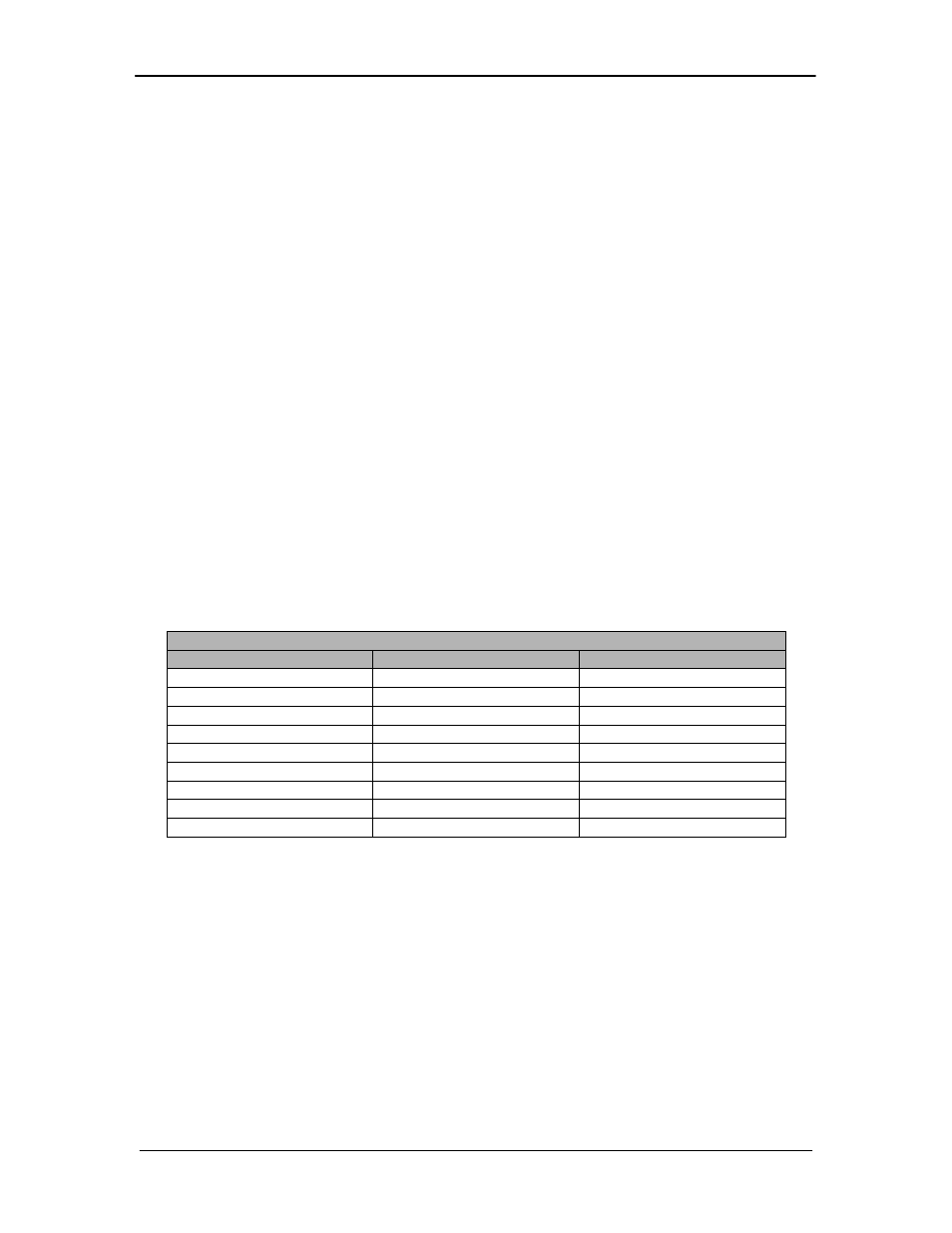Comtech EF Data DD2401 VME User Manual
Page 31

DD2401 VME L-Band Demodulator Card Installation & Operational Manual
User Interfaces
MN-VME2401 – Rev. B
4-7
<SYNC> - the message format header character, or ASCII sync character, that defines the
beginning of a message. The <SYNC> character value is always 16h (1 Byte).
<BYTE COUNT> - the Byte Count is the number of bytes in the <DATA> field (two bytes).
<SOURCE ID> - the Source Identifier defines the multi-drop address origin. Note that all nodes
on a given control bus have a unique address that must be defined (1 Byte).
<DESTINATION ID> - The Destination Identifier serves as a pointer to the multi-drop destination
device that indicates where the message is to be sent (1 Byte).
<FRAME SEQUENCE NUMBER> -The FSN is a tag with a value from 0 through 255 that is sent
with each message. It assures sequential information framing and correct equipment
acknowledgment and data transfers (1 Byte).
<OPCODE> - The Operation Code field contains a number that identifies the message type
associated with the data that follows it. Equipment under MCS control recognizes this
code via firmware identification and subsequently steers the DATA accordingly to
perform a specific function or series of functions. Acknowledgment and error codes are
returned in this field (two bytes).
<...DATA...> - The Data field contains the binary data bytes associated with the <OPCODE>. The
number of data bytes in this field is indicated by the <BYTE COUNT> value.
<CHECKSUM> - The checksum is the modulo 256 sum of all preceding message bytes,
excluding the <SYNC> character (1 Byte). The checksum determines the presence or
absence of errors within the message. In a message block with the following
parameters, the checksurn is computed as shown in Table 4-4 below.
Table 4-4. Checksum Calculation Example
Byte Field
Data Content
Running Checksum
<BYTE COUNT> (Byte 1)
00h = 00000000b
00000000b
<BYTE COUNT> (Byte 2)
02h = 00000010b
00000010b
<SOURCEID>
F0h = 11110000b
11110010b
<DESTINATION ID>
2Ah = 00101010b
00011100b
<FSN>
09h = 00001001b
00100101b
<OPCODE> (Byte 1)
00h = 00000000b
00100101b
<OPCODE> (Byte 2)
03h = 00000011b
00101000b
<DATA> (Byte 1)
DFh = 11011111b
00000111b
<DATA> (Byte 2)
FEh = 11111110b
00000101b
Thus, the checksum is 00000101b; which is 05h or 5 decimal. Alternative methods of calculating
the checksum for the same message frame are:
00h + 02h + F0h + 2Ah + 09h + 00h + 03h + DFh + FEh = 305h.
Since the only concern is the modulo 256 (modulo 1 00h) equivalent (values that can be
represented by a single 8-bit byte), the checksum is 05h.
For a decimal checksum calculation, the equivalent values for each information field are:
0 + 2 + 240 + 42 + 9 + 0 + 3 + 223 + 254 = 773;
773/256 = 3 with a remainder of 5.
This remainder is the checksum for the frame.
5 (decimal) = 05h = 0101b = <CHECKSUM>